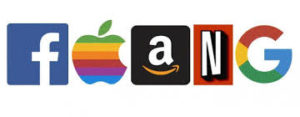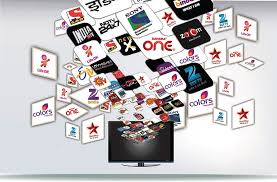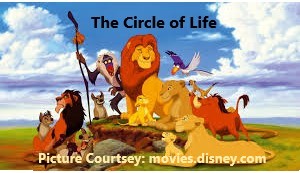Netflix streaming service: Putting broadcasters out of service
Netflix streaming service: The Rental service which became Global
The story of Netflix streaming service is a rag to riches story. It all started way back in the year 2000 in Phoenix, Arizona. Netflix was a DVD rental firm when Ted Sarandos (Chief content officer) decided to join the organisation. In 2011 Netflix was just moving into streaming when Mr. Sarandos decided to take a big gamble. He bought the rights of a television drama called “House of Cards” starring Kevin Spacey and Robin Wright for a whopping $100 million. The biggies of the world like Disney and Warner brothers derided Netflix for being profligate. The big daddy’s never expected a mail-order video store to take on networks and studios which took decades to build.

Netflix the streaming service has never looked back since and today virtually rules the entertainment world. It is expected to burn $15 billion only on original and licensed content to entertain its 140 million global subscribers. According to Goldman Sachs, a bank, Netflix will be spending an annual $22.50 billion on content by 2022. Looking at the prospects, Netflix is valued today at $170 billion and is currently headed by the CEO Reed Hastings. It has become the World’s first global television giant.
The FAANG

The valuation has helped Netflix become a part of the exclusive club of 5 most valuable technology stocks. The ‘N’ today has become a part of “FAANG”. FAANG is the abbreviation of Facebook, Amazon, Apple, Netflix, and Google. Netflix has another advantage over the rest of the gang. Unlike Facebook and Google, Netflix has steered clear of news and mostly stuck to entertainment. That has protected it from scandals over fake news, electoral manipulation, and political tribalism. Even Apple and Amazon are being fined in Europe for trying to squeeze competition.
There is one more thing about Netflix. While the rest of the members have a global reach but are unmistakably American, Netflix is becoming truly international. It makes TV shows in 21 countries, dubbing and subtitling them into multiple languages.
Streaming Services now overflowing with Global players

Success begets success. Seeing the success of Netflix in streaming services, most of the big players have jumped into the fray. AT&T, Comcast, and Disney have spent $215bn in total on the acquisition of Time Warner ($104bn), Sky, a European broadcaster ($40bn) and much of 21st Century Fox($ 71 bn) respectively. Each of these big players is planning new streaming services by early 2020.
And how can Apple and Amazon be left behind? On March 25th this year Apple has unveiled its new streaming video service – Apple TV+. It will soon be available in more than 100 countries by the end of the year. Amazon is thought to be spending more than $5bn a year on content.
Netflix streaming service: Whatever, Whenever and Wherever

The success of Netflix streaming services comes from the fact that a viewer is no longer a slave of time-slots and channels. He doesn’t have to wait for next week to see the next episode.
Streaming service offers the viewer the flexibility of:
Whatever – the viewer can watch any show of his taste out of a huge catalogue.
Whenever – the viewer can watch at a time convenient to him. He can watch the entire season at one go or watch episode by episode.
Wherever – With a broadband connection and a mobile a viewer is not limited to watch only in his living room but can watch it at any place.
Content is King but Netflix streaming service is the leader in the ring
Netflix streams are consuming 20% of the world’s internet bandwidth. The success of Netflix can be attributed to a great extent to its programming. It has started turning non-English language shows into hits. “Money Heist”, a Spanish crime thriller series and “Dark”, German science fiction about missing children, have both been watched by millions in the US, Mexico, and Brazil. Nine out of ten people who watched “Dark” were from outside Germany. “Stranger Things”, “Narcos”, “Breaking Bad” are serials that have been watched by viewers from Mexico to India.
https://www.netflix.com/title/80057281
https://www.netflix.com/title/80025172

Clearly in a planet-wide community of binge-watcher, Netflix the streaming service is just streaming ahead. Netflix has identified some 2000 “taste clusters” by watching its watchers. Viewers, based on their viewing history, are bombarded with a whole lot of new programs matching their taste. The algorithms help Netflix identifying what its customers want to watch.
Streaming service in India is steaming hot
India, with a base of 300 million smartphone users and 200 million TV-owning households is a market just ripe for streaming services. Netflix in India has 1 million subscribers. But 1 million is like a decimal on a base of 140 million subscribers worldwide. Hotstar from Star (now a Disney company) is growing rapidly and leads the race followed by numerous others. There is ZEE5, SonyLIV, Voot (Colors), ALT Balaji (Kyunki saas bhi kabhi bahu thee fame), MX player and many more.

Hotstar, the leader is eyeing 100 million-plus subscribers. Fueling the growth is Reliance-Jio which is responsible not only for providing a faster bandwidth but also a platform that will start competing soon. By the way, streaming services are also referred to as OTT or Over the Top players.
How do streaming services whip the cream?
Netflix is advertising-free and so the entire revenue comes from the subscribers. The deal is simple, offer customer quality programming in exchange for a monthly subscription. Netflix the streaming service offers 4 different plans in India – Rs 250 (only mobile plan), Rs 500, Rs 650 (2 screen connections) and Rs 800 (4 connections).
Future of Broadcasters

The broadcasters are clearly in for a shock. The cheap, personalized, advertising-free, binge-released video on streaming has hastened a decline in audiences. Across the world, broadcasters are losing audiences. Americans aged 12-24 are watching less than half as much pay-TV as in 2010.
A similar trend is visible in India. Youngsters are watching streaming services from Hotstar to Netflix to Amazon Prime. Hotstar is the current favorite but the rest of the players like MX Player from the Times of India group, ZEE5 from the Zee group, and many more are adding new viewers every day.
One of the dilemmas facing the broadcasters is the new pricing guidelines of TRAI (Telecom Regulatory Authority of India). It has burdened subscribers with higher overall prices and a more complex system. The idea behind the new regulations of TRAI was to make the system more transparent, flexible and make TV bills more affordable. But the new pricing mechanism has backfired and TRAI has received a lot of backlashes for the same.
Viewers on the other hand who have got hooked to streaming services don’t want to take the additional burden of pay-TV which they are hardly watching. Therefore they are just saying goodbye to Broadcasters. Losing audiences for the Broadcasters means losing the advertiser’s money.
Technology will keep evolving but watching will never stop
Technology is always changing and makes the users get hooked onto new features. It all started with Black and white TV and then Colour TV followed by Colour TV with remote. Then came the LED TV to soon dethroned by Smart TV and TV viewing has never been the same. Now mobile screens are replacing TV faster. From a single state-controlled broadcaster Doordarshan to multiple ones and now from broadcasters to streaming, the name of this sacred game of unlimited season is “Evolution”.
Read more such similar stories – Click on the link below:
Driving an Electric Car: Charging ahead with full power
Acknowledgement:
The Economist:
Issue dt: June 30th 2018 / Story - Netflixonomics, Page - 16
Issue dt: Mar 30th 2019 / Story - Streamlined, Page - 61
Issue dt: Apr 6th 2019 / Story - Hotstar wars, Page - 58












Comments
Leave a Comment